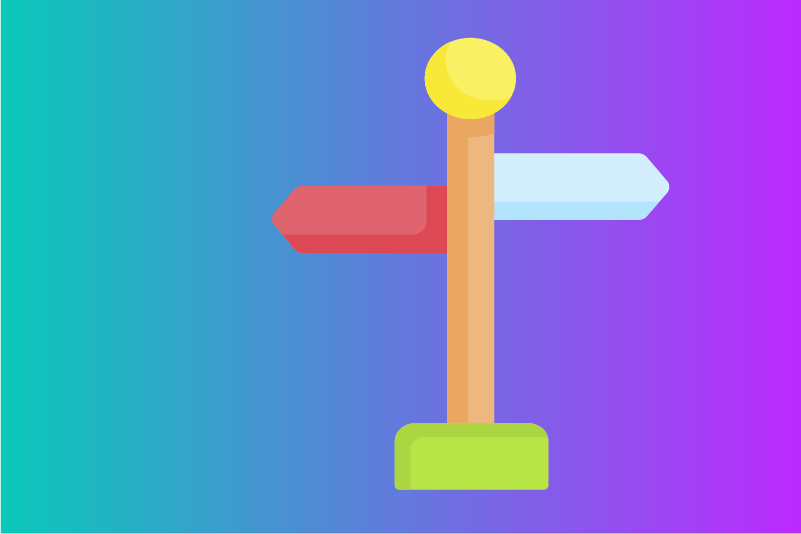Creativity – it’s been fascinating us for centuries. But what causes it and which part of the brain is responsible? Neuroscience and psychology give us clues. We know that the left and right hemispheres are connected to different functions: left for logic, right for imagination. But research shows creativity involves both.
Let’s dive into the intricate workings of the brain so we can learn how to achieve our full creative potential!
Understanding the Two Sides of the Brain
The brain is complex, with cells and pathways divided into two hemispheres – left and right. Each side has its own role to play in cognitive abilities. So, which side is responsible for creativity?
Studies suggest both are involved, but not in the same way. The left hemisphere is known for its logical and analytical thinking. Meanwhile, the right hemisphere is more associated with imagination and intuition. However, creativity is a holistic process that involves collaboration between both.
Throughout history, there have been theories that one hemisphere dominates creative thinking. For instance, Roger Sperry proposed each has distinct functions and right hemisphere dominance results in higher creativity.
But research since then has shown that true creativity comes from interaction between both hemispheres.
It’s a dynamic process, involving different regions in both.
Capabilities of the Left and Right brain
To gain a better understanding of creativity, let’s explore the left and right brain and their distinct functions.
Exploring the Functions of the Left Brain
The left brain is known for its analytical and logical capabilities.
- It is responsible for language processing, calculations, and problem-solving.
- It also controls the right side of our body, allowing precise movements and tasks requiring fine motor skills.
- It aids in understanding and interpreting information, as well as communicating effectively.
- The left brain is linked to our memory formation and retrieval: research has shown it stores and retrieves factual information.
To demonstrate its power, consider Anne Sullivan and Helen Keller. Sullivan was able to teach Keller sign language by stimulating her left brain’s language centers.
The left brain is complex and multifaceted. From logic to language to memory, it plays a major role in our lives. Its intricacies allow us to appreciate our cognitive abilities. Meanwhile, the right brain is where creative geniuses reside—and where we can blame our questionable dance moves on!
Exploring the Functions of the Right Brain
The right brain is all about the fun stuff – creativity, intuition and holism.
- It’s connected to artistic abilities like drawing and painting.
- It also helps with recognizing faces and understanding emotions.
- It’s great at tasks requiring spatial awareness, like navigating and perceiving depth.
- Non-verbal cues? No problem! It helps us understand body language and facial expressions.
- Music and rhythm? Of course! The right brain is the master of melodies and harmonies. Studies even show a link between musical intelligence and math, so it seems the right brain is good at math too.
Savita Srivastava is a great example of the power of the right brain. After a stroke at 66, she discovered her talent for painting through her fully functioning right brain. Her artwork was beautiful – colour contrasts and abstract patterns!
Creativity – What Science Says
Let’s considere the fascinating insights gained from scientific exploration into the relationship between creativity and the right brain.
Studies on Creativity and the Right Brain
Studies have explored the interesting connection between the brain and creativity. Experts have found a strong link between them. The right side of the brain, known for its artistry and imagination, is key to nurturing and expressing creativity.
Research has discovered many things about the right brain’s role in creativity. For example, studies using advanced imaging techniques have shown more activity on the right side while people are painting, improvising or solving problems. This suggests that creative activities are engaging this area of the brain, using its special abilities.
Plus, research has found that people with a stronger right brain are usually more creative. They have a great imagination, as well as intuition and emotional sensitivity. This helps them combine unrelated ideas and make new ones that break from the norm.
So, understanding how creativity works in the brain is very important. By understanding the right brain, researchers can learn how to unlock and boost creativity in different people.
It’s important to understand the value of creativity and use it along with analytical thinking. This will help us reach our full potential and come up with new answers to tough questions. Embracing creativity can lead to a brighter and more innovative world.
Studies on Creativity and the Left Brain
It turns out that the left brain has a role to play in creativity too.
Studies indicate that brain activity can flip flop between both sides of the brain during creative activities. This is exciting because it expands our knowledge of creativity. Yes, there is a dominance of creative ability in the right brain, but the left brain is involved- it does wake up during creative endeavours.
We’ll likely never fully understand exactly how the brain works – it’s far too intricate and fascinating for that.
Factors Influencing Creativity
Is creativity something you’re born with? It turns out that there’s a lot more to creativity than just left or right brain dominance. Let’s consider the link between external factors – like your environment – and creativity.
Nature vs. Nurture Debate
The nature vs. nurture debate is often discussed in psychology. It is about if traits and behavior are due to genetics (nature) or environment and upbringing (nurture). Creativity is thought to need both nature and nurture.
Genes may affect creativity through intelligence, personality, and cognitive abilities. Some genetic variations can increase creativity, while others can decrease it. These genes give someone a potential for creativity.
Nature is not the only factor in creativity. Environment also plays a role. A stimulating environment lets someone explore their imagination and do creative activities. Art, music, literature, and cultural experiences can shape creative expression.
Society’s attitude towards creativity impacts its development. In societies that value conformity, creativity is more difficult. Societies that are open to experimentation and new ideas are better for creativity.
To understand creativity, both nature and nurture must be considered. Genes give potential, but the environment is what makes it happen.
The Role of Environment and Upbringing in Fostering Creativity
Environment and upbringing have a major role in promoting creativity. Stimulating surroundings bring out innovative thinking and inspire new ideas.
Early experiences and upbringing shape one’s creative development.
To foster creativity, an environment must welcome experimentation and diversity. Growing in such a place encourages imagination and helps develop a unique point of view. Children learn to appreciate art, literature, and culture and can hone their own creative skills.
Supportive and encouraging parents and caregivers are crucial to developing creativity. Positive reinforcement gives children the confidence to explore their thoughts without fear of failure or criticism.
Editor’s Note: Creativity benefits from a stimulating and interesting environment and different experiences – at any age! You’re never too old to explore and develop your creativity. Sign up for an art class, a cooking class, the possibilities are endless! You’ll never know if you don’t try.
The Importance of Balance Between the Left and Right Brain
To achieve a balanced approach to creativity, understanding the importance of balance between the left and right brain is crucial. In order to develop and stimulate the right brain for creativity, let’s explore effective techniques and strategies.
How to Develop and Stimulate the Right Brain for Creativity
Unlock your right brain’s creative power! Here’s a 4-step guide to help you tap into it.
- Engage in artistic pursuits:
- Try painting, drawing, or sculpting.
- Experiment with different mediums and techniques.
- Attend art classes or workshops.
- Practice mindfulness and meditation:
- Set aside dedicated time each day.
- Focus on observing your thoughts without judgment.
- Embrace silence and stillness for creative ideas.
- Embrace curiosity:
- Cultivate a sense of wonder.
- Seek out new experiences, places, and perspectives.
- Ask questions and challenge assumptions.
- Foster an open mind:
- Embrace ambiguity and uncertainty.
- Be open to diverse perspectives and ideas.
- Engage in meaningful conversations.
Engaging in art, practicing mindfulness, embracing curiosity, and fostering an open mind can help you develop your right brain for creativity and enhance the creative process. This will help you make unique associations and expand neural connections, so you can solve problems, innovate, and explore a wealth of creative possibilities.
Unlock your right brain and you’ll have a friend who can both dance and do math!
Examples of Creative Individuals
Salvador Dali, a renowned surrealist painter, was guided by his subconscious mind in creating his iconic works such as “The Persistence of Memory.” This demonstrates how the brain’s right hemisphere can inspire imaginative and unconventional art.
Steve Jobs was another great example. His innovative thinking allowed him to fuse technology and design. With this, he revolutionized multiple industries, showing the power of lateral thinking in sparking creativity.
Ada Lovelace, a pioneering mathematician and the world’s first computer programmer, exemplifies the combination of logic and creativity for groundbreaking inventions. Her analytical skills enabled her to go beyond the limitations of her time, laying the groundwork for modern computing.
If you love being creative and you’d like to develop your creative side on a professional level, consider looking into careers that suit and promote creativity.
Remember: to nurture creativity, you can:
- Embrace curiosity to explore new ideas and perspectives.
- Practice mindfulness and meditation for cognitive flexibility.
- Engage in interdisciplinary learning to combine insights from different domains for unique perspectives.
Embracing the Complexity of Brain Functions in Creativity
Creativity is complex. It’s not just one side of the brain. It requires many brain functions and networks working together. It involves various regions and networks communicating.
Idea generation is a part of creativity. It needs specific parts of the brain, like the prefrontal cortex, hippocampus, and anterior cingulate cortex. They help with flexible thinking, ideas, and memory.
Emotions are important for creativity too. Positive emotions like joy, excitement, and curiosity can increase attentional focus, increase cognitive flexibility, and help problem-solving.
To boost creativity, people can do things that promote neural plasticity, like meditation, mindfulness, exercise, and new experiences. These stimulate and strengthen parts of the brain that contribute to your overall creative potential.





